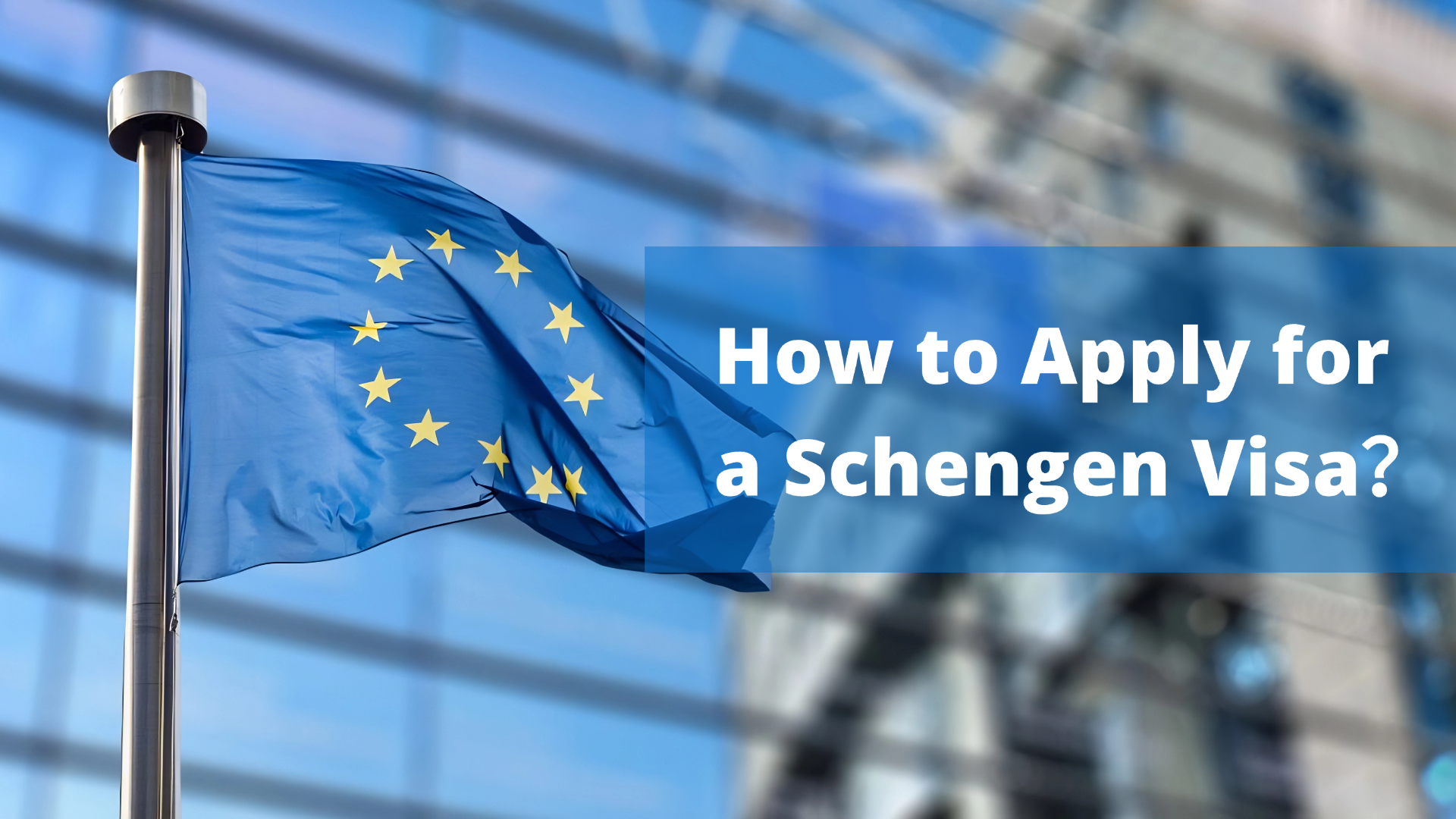contents
Introduction to Schengen Visa
Who Needs a Schengen Visa?
Types of Schengen Visas
Schengen Visa Eligibility Criteria
Documents Required for Schengen Visa
Schengen Visa Application Process Overview
How to Book a Visa Appointment?
Visa Fees and Payment Options
Submitting Biometrics for Schengen Visa
Attending the Visa Interview
Processing Time for Schengen Visa
How to Extend a Schengen Visa
Frequently Asked Questions (FAQs)
The Schengen visa is one of the most sought-after travel visas, granting access to 29 European countries within the Schengen Area. This guide provides a comprehensive overview of how to apply for the Schengen visa, including the necessary steps, eligibility criteria, required documentation, and common pitfalls to avoid.
1. Introduction to Schengen Visa
A Schengen visa allows non-EU citizens to travel freely across the Schengen Area for up to 90 days within a 180-day period. This visa is valid for business, tourism, family visits, or transit, depending on the specific type of visa granted. The Schengen Area includes most of the European Union (EU) member states, except for a few countries like Ireland, and includes non-EU countries such as Norway and Switzerland.
The Schengen visa simplifies travel by eliminating the need for multiple visas for different European countries. Instead, holders of this visa can visit any or all Schengen countries during their stay, as long as they respect the rules set by the issuing state.
Citizens of many countries outside of the EU need a Schengen visa to enter the area. The requirement applies to tourists, business travelers, and even those in transit. However, certain countries enjoy visa-free access to Schengen nations for short stays. It’s important to check whether your country is part of this visa-free list before applying.
There are two main types of Schengen visas:
Short-Stay Visa (Type C): Valid for stays up to 90 days.
Long-Stay Visa (Type D): For individuals who plan to live, work, or study in a Schengen country for an extended period.
2. Who Needs a Schengen Visa?
Depending on your travel needs, there are various Schengen visas available:
3. Types of Schengen Visas
(1) Single Entry Visa
Allows you to enter the Schengen Area once. After you leave, the visa becomes invalid.
(2) Double Entry Visa
Permits entry to the Schengen Area twice within the visa’s validity period.
(3) Multiple Entry Visa
Grants unlimited entries and exits within the visa’s validity (up to 90 days within 180 days).
(4) Transit Visa
For individuals transiting through a Schengen country on their way to a non-Schengen destination.
It is generally recommended to apply for a multiple-entry visa. For more detailed information on Schengen visa entries, click here.
4. Schengen Visa Eligibility Criteria
Before applying, ensure you meet the eligibility criteria:
(1) Residency Requirements
You must apply from your country of residence.
(2) Purpose of Visit
Your reason for travel must align with one of the permissible visa purposes, such as tourism, business, or visiting family.
(3) Financial Means
You need to prove that you can support yourself financially during your stay.
(4) Return Ticket
You must have a confirmed ticket for your return or onward travel.
(5) Valid Travel Insurance
Comprehensive insurance covering the Schengen area for the duration of your stay is required.
5. Documents Required for Schengen Visa
To successfully apply for a Schengen visa, you need to gather several key documents:
(1) Visa Application Form
Fully completed and signed.
(2) Valid Passport
Your passport must be valid for at least three months beyond your intended stay.
(3) Passport-Sized Photos
Typically two recent photos, adhering to the Schengen visa photo guidelines.
(4) Proof of Travel Insurance
Minimum coverage of €30,000, valid throughout the Schengen Area.
(5) Flight Reservation or Itinerary
Proof of a return or onward journey.
(6) Accommodation Proof
Hotel booking, rental agreement, or an invitation letter from your host.
(7) Proof of Financial Means
Bank statements or a financial guarantee.
(8) Employment Verification
Employment letter, proof of business ownership, or a student status certificate.
6. Schengen Visa Application Process Overview
The process involves several key steps:
(1) Determine Which Schengen Country to Apply To
If you are visiting multiple countries, apply at the consulate of the country where you’ll spend the most time or where you will first enter.
Appointments can be booked online through embassy websites or authorized visa centers.
(3) Prepare Your Documents
Gather all necessary documentation in line with the consulate’s requirements.
(4) Submit Biometrics
You may be required to submit fingerprints and a photograph at the visa center.
(5) Attend Visa Interview
Some consulates require an in-person interview as part of the application process.
(6) Pay the Visa Fee
The visa fee varies but typically ranges from €35 to €90, depending on your nationality and the type of visa.
7. How to Fill Out the Schengen Visa Application Form?
The visa application form is straightforward but must be completed accurately. It will ask for:
Personal Details: Name, date of birth, nationality, passport information.
Travel Information: Dates of travel, purpose of visit, accommodation details.
Financial and Employment Details: Proof of income or sponsorship.
Declaration: Sign and date the form, ensuring all information is truthful.
If you are still confused about this, we can help you fill out the Schengen visa application form.
Each Schengen country has its own system for booking appointments, either directly through their consulates or via authorized visa centers (such as VFS Global). Follow these steps:
(1) Choose the Correct Embassy or Visa Center
Ensure it aligns with your primary destination.
(2) Register Online
Some embassies require pre-registration on their visa application portals.
(3) Select a Date and Time
Pick a suitable appointment for your visa submission.
As is well known, there is no such service for Schengen visa processing, but Skytravel Global can help you secure the earliest Schengen visa appointment. Click here to schedule an appointment quickly.
10. Visa Fees and Payment Options
Visa fees for a Schengen visa vary but are generally set at around €90 for adults, €45 for children aged 6 to 12, and free for children under 6. Payment can typically be made online or at the embassy/consulate during your appointment.
11. Submitting Biometrics for Schengen Visa
Most Schengen visa applicants will be required to submit biometrics, which involves fingerprinting and a photo. This data is valid for five years, so you won’t need to resubmit unless your biometric data has expired.
12. Attending the Visa Interview
Certain embassies require an interview to assess your application. Be prepared to answer questions about:
Your travel itinerary.
The purpose of your visit.
How you plan to finance your stay
Dress formally and ensure you have all supporting documents ready.
13. Processing Time for Schengen Visa
The processing time typically ranges from 15 to 30 days, but it can vary depending on the country and season. Some applications may take longer if additional scrutiny is required or during peak travel seasons.
14. Common Reasons for Schengen Visa Denial
Incomplete Documentation: Missing essential paperwork like financial statements or travel insurance.
False Information: Any inconsistencies in your application may lead to denial.
Lack of Financial Proof: Insufficient funds can result in rejection.
If your visa is denied, you’ll be informed of the reasons and given the option to appeal the decision.
For more information on the reasons for Schengen visa rejection and how to avoid them, click here.
15. How to Extend a Schengen Visa
If you need to extend your Schengen visa, it is possible under limited circumstances, such as for medical reasons, humanitarian grounds, or force majeure (e.g., flight cancellations). Apply at the local immigration office before your current visa expires.
16. Frequently Asked Questions (FAQs)
Q1: Can I apply for a Schengen visa while traveling outside my home country?
A1: Generally, you should apply from your country of residence. Exceptions may apply if you hold a long-term residence permit elsewhere.
Q2: How long can I stay in the Schengen Area on a visa?
A2: You can stay up to 90 days within a 180-day period.
Q3: Can I visit multiple countries on a Schengen visa?
A3: Yes, you can visit multiple Schengen countries, as long as you adhere to the visa’s conditions.
Q4: Do I need travel insurance to apply?
A4: Yes, travel insurance with a minimum coverage of €30,000 is mandatory.
Q5: How soon should I apply for a Schengen visa before traveling?
A5: It’s recommended to apply at least 15 to 30 days before your intended travel date.
Q6: What should I do if my Schengen visa application is denied?
A6: You can appeal the decision or reapply with corrected information.
Skytravel Global was established in 2020 and is based at 1 Jordan Street, Manchester, United Kingdom. We provide Schengen visa consultancy and assistance in the UK. Since our establishment, we have served over 10,000 clients.







